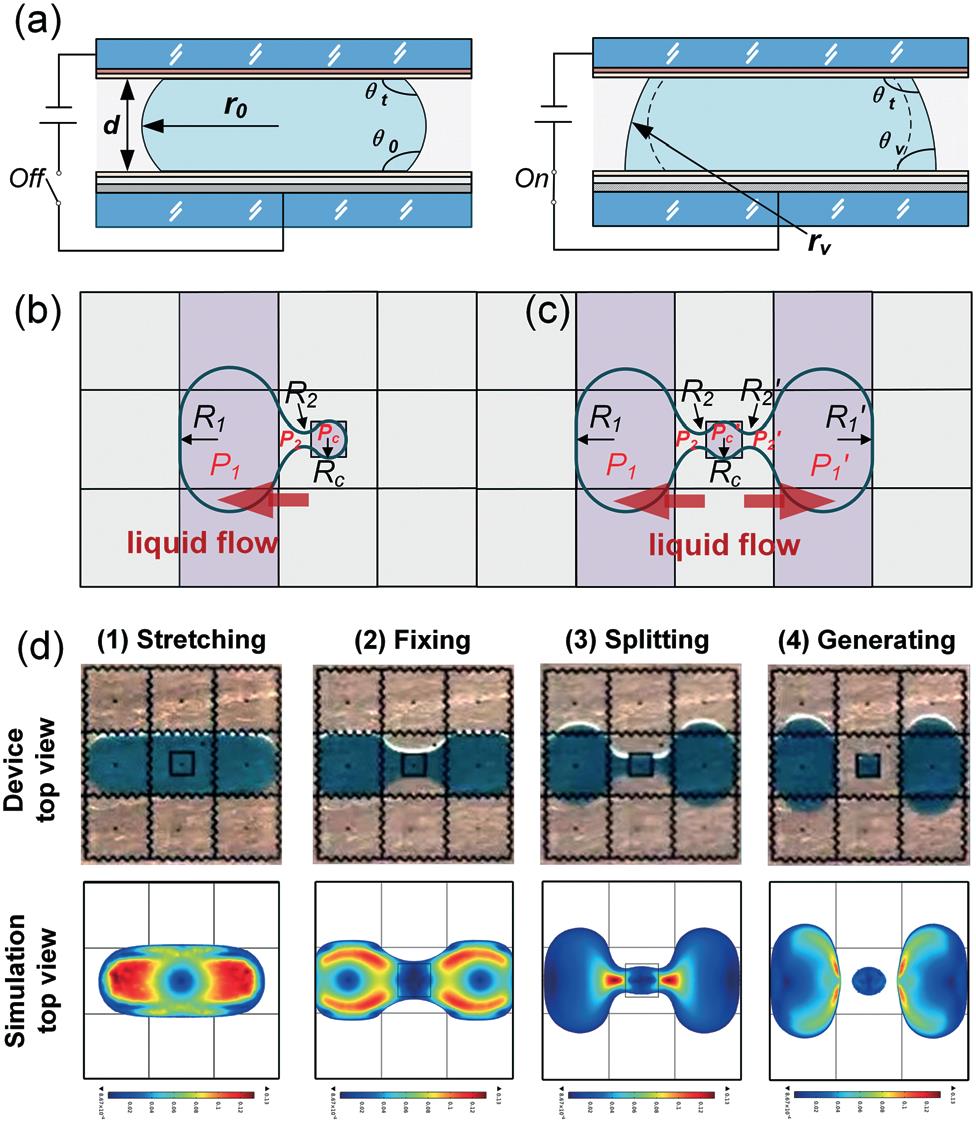
Recently, a team led by Prof. MA Hanbin from the Suzhou Institute of Biomedical Engineering and Technology (SIBET) of the Chinese Academy of Sciences proposed a "One-to-three" method of digital microfluidic droplet generation.
Digital microfluidics (DMF) is a semiconductor technology that uses electrical signals on a palm-sized microfluidic chip to precisely manipulate the movement of a small amount of liquid by an electrode array. It can automatically realize "Point of care" testing (POCT) without the assistance of peripherals. This technology has been widely applied in chemical synthesis, biological analysis, disease diagnosis and other fields.
The new method of MA's team is based on the principle that the symmetrical tearing of the droplet can maintain the balance of surface tension at the geometric center. A large droplet is divided into three droplets, including one "high aspect ratio" droplets that can be efficiently separated without changing the geometric size of the digital microfluidic chip. This droplet splitting method exceeds the geometric limit of electrowetting-on-dielectric.
Efficient and stable generation of micro-droplets is the core of DMF technology and remains hard to realize. Smaller droplet means more detection in a limited chip area and will increase the throughput of the system, improve flexibility of specific experiments such as on-chip sample dilution and magnetic bead cleaning, and therefore greatly broadens the application of DMF in POCT.
Combining the advantages of "One-to-three" method, the team integrated a magnetic attraction module, an optical detection module, a three-axis control module, and a droplet drive system, and developed a set of software with automatic path compilation, inspection monitoring, and three-axis control.
A set of fully automated digital microfluidic chemiluminescence immunoassay platform has been constructed. by continuous testing and optimization of the system.
This highly integrated platform can quickly complete efficient magnetic bead washing. It is capable of detecting five B-type natriuretic peptide samples in parallel on one chip at the same time. It takes about only 10 minutes to complete an entire immunoassay process.
"We completed the whole process from theoretical breakthrough to functional design and engineering development," said MA.
The research results can be applied to the quantitative and rapid detection of B-type natriuretic peptide in human serum and have certain value in the diagnosis of heart failure, prognostic evaluation, disease monitoring, and guiding treatment.
Relevant research results entitled "'One-to-three' droplet generation in digital microfluidics for parallel chemiluminescence immunoassays" have been published in Lab on a chip, and selected as the inside cover paper, as well as included in the 2021 hot paper set.

Figure. "One-to-three" micro-droplet generation principle and process. (Image by SIBET)

86-10-68597521 (day)
86-10-68597289 (night)

86-10-68511095 (day)
86-10-68512458 (night)

cas_en@cas.cn

52 Sanlihe Rd., Xicheng District,
Beijing, China (100864)

